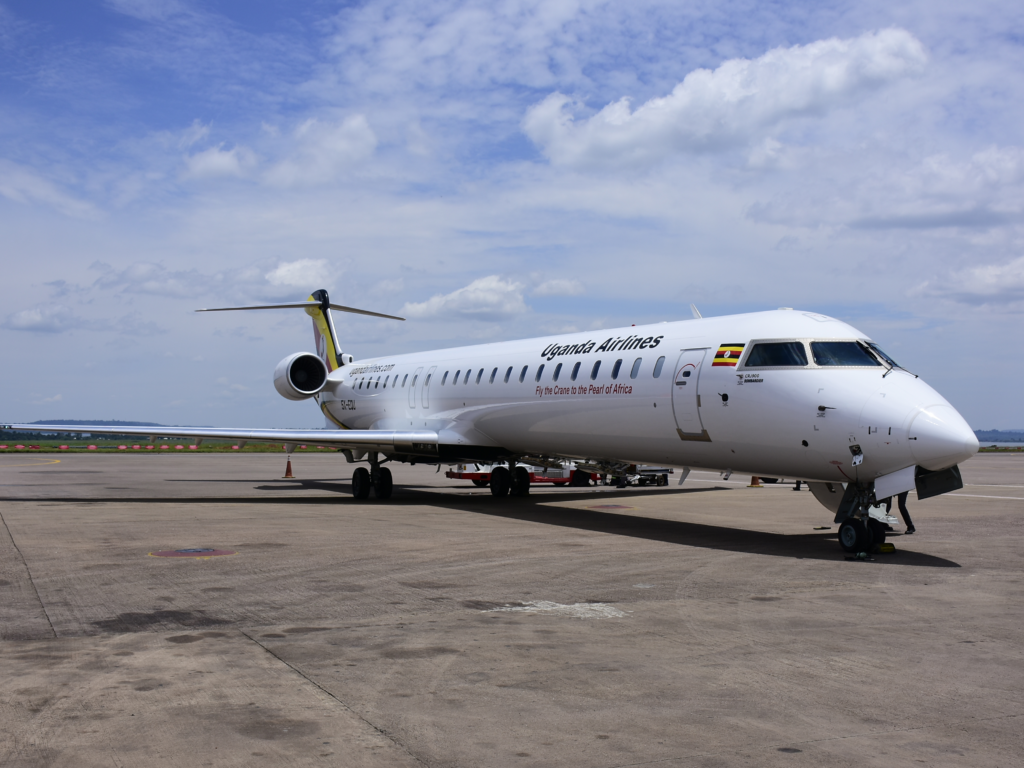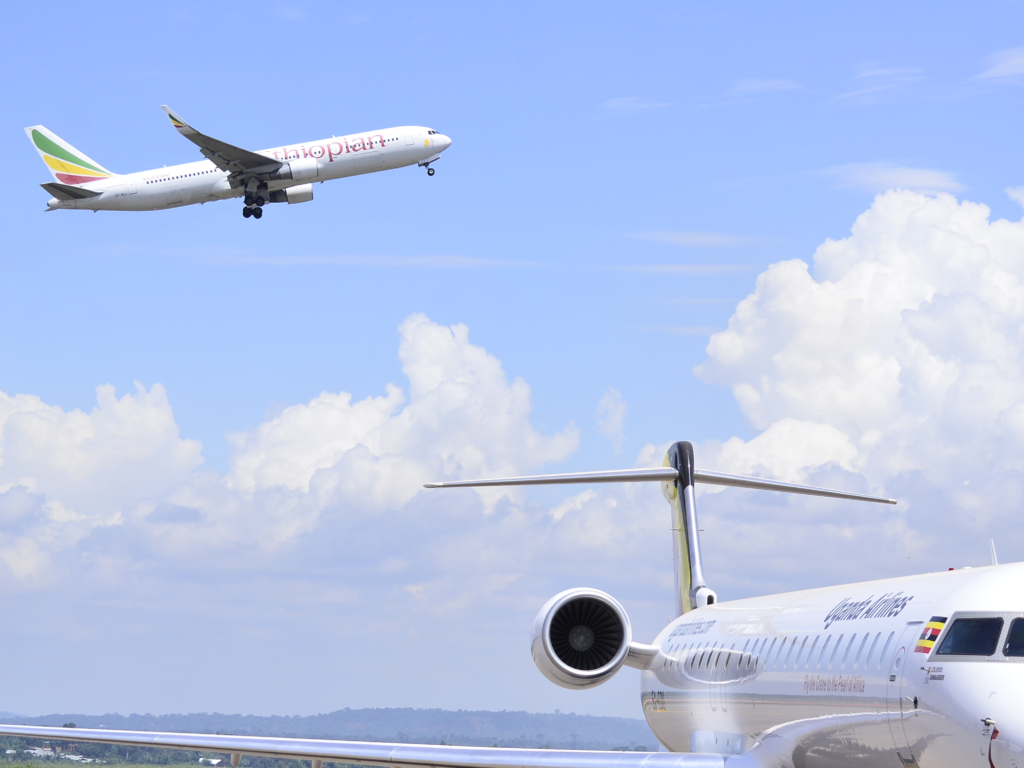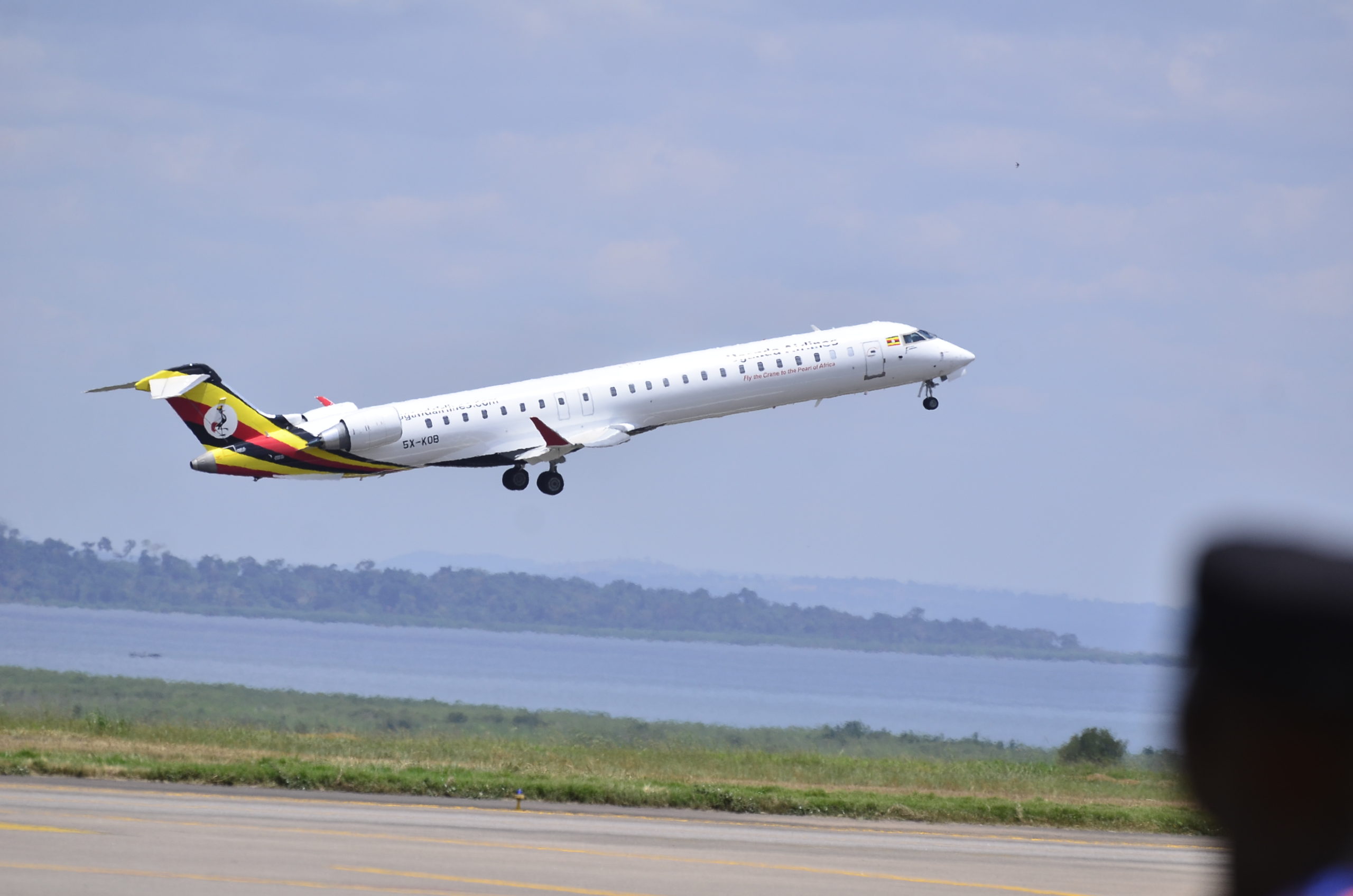By: Robert Madoi
When Uganda Airlines celebrated its one year anniversary since its recent revival, nobody was expecting the company’s insurance underwriter, Britam, to steal the show. It’s safe to say, however, that the national carrier never expected Britam’s fame (or infamy for that matter) to rest on its mastery of cake-making. The insurance company revealed an aviation themed cake during the occasion that was deemed to have fallen far short of acceptable standards. Well, at least, according to the vast bulk of members of the Twitterati, whose stunned disbelief — bordering on hostility —made a laughing stock of the carrier’s modest milestone.

Just like baking, which can be a long and sometimes uncertain process, managing the precarious financial position of many national carriers in Africa is anything but a cakewalk. It hardly helps matters that the coronavirus pandemic has turned up the heat. Instead of taking to the skies, the majority of the world’s aircraft have been sunbathing on tarmac. Like most other carriers, Uganda Airlines — which operated from 1977 to 2001 before its revival in August 2019 — has had to bear the brunt of the virus-induced disruption.
The national carrier, which has already burned through nearly Shs. 300 billion of taxpayers’ money since re-launching, had initially set itself a target of turning a profit inside the seventh year of its revival. Covid-19 has scampered any such plans with air connectivity across the continent coming to a screeching standstill. Statistics from International Air Transport Association (IATA) show that a little more than 80 million passenger journeys across Africa will go up in smoke. This plummet in traffic — totalling 54 per cent of the continent’s annual average — will have an outsized impact on the bottom-line, with African economies losing up to $35 billion in aviation related Gross Domestic Product (GDP).
Muhammad Al Bakri, IATA’s Regional Vice President for Africa and the Middle East, has consequently tasked state actors across the continent, “to expedite the safe restart of the industry.” At the low-key occasion to mark Uganda Airlines’ first anniversary, the carrier’s chief executive officer, Cornwell Muleya, was quick to portray a company hard at work despite the pandemic’s best efforts. He said: “In addition to developing the regional networks, of which we have already developed nine routes, we need to do a bit more to acquire the 18 routes required for Africa. We are going to expand the network to intercontinental with the two Airbus A330s arriving in December.”

Hot air, no liftoff
Uganda’s flag carrier has four CRJ900 Bombardiers that, before the coronavirus pause, plied a handful of international short-haul routes (out of its Entebbe hub to Zanzibar, Kilimanjaro, Dar es Salaam, Juba, Mogadishu, Nairobi, Mombasa, and Bujumbura). The CRJ900s, which were all grounded when coronavirus-related travel restrictions came into effect in late March, have recently taken to the skies for various repatriation flights. This helped push the total number of passengers Uganda Airlines flew during its first year to a little over 75,000. As it awaits two A330-800neos due in December, the national carrier has moved to tie down some long-haul routes. They have confirmed a new route for the Middle East, and are confident of securing roues to the UK (London) and China (Guangzhou). Medium-haul routes (Lusaka, Johannesburg, Khartoum, Cairo and Harare) are soon expected to follow.
While the aviation industry in Africa continues to provide a lot of hot air, there is little sign of lift off. This is unlikely, however, to make Uganda give up on its latest pet project. Such zeal was not widely shared during Mansa magazine’s recent webinar. The webinar, dubbed ‘State of Africa 2020’, attracted some eminent figures who came to radically different conclusions about where Africa’s aviation industry goes from here. Firstly, there are the biblical losses to contend with – estimated to be $6 billion. Zemedeneh Negatu, the Global Chairman of US-based investment entity, Fairfax Africa Fund, says: “Africa’s aviation is in a structural crisis. The airline industry as a whole in Africa has not made money for long except Ethiopian Airlines.”
Problems before Covid-19
Negatu, who has reluctantly accepted — rather than welcomed — the plethora of national carriers in Africa, says the pandemic is being used as a red herring. “I see Covid as a cover — an excuse to get bailouts for bad business models to be salvaged. Most are not worth salvaging because they are not salvageable.”

Adefunke Adeyemi, IATA’s Regional Head for Airline and Relations in Africa & Middle East, nonetheless contends that it is counter-productive to turn against the sector. She believes that lack of detailed knowledge of the aviation industry’s potential to be an enabler on the continent remains a serious handicap. Adeyemi is also acutely conscious of how damaging the pandemic has been to the industry. Pre-pandemic, aviation supported 5.6 per cent in GDP across Africa. Such has been the pandemic’s adverse effect that the aforesaid number has been halved. “Financial relief to the industry is critical at this time to help the industry survive and then recover,” Adeyemi notes, adding, “The underlying effect of the aviation sector is that it supports and connects people. Connectivity leads to productivity that leads to a wonderful virtuous circle.”
Key to creating a recurring cycle of events that feed off each other is a cold clarity of purpose. National carriers shouldn’t be considered in isolation. According to Chamsou Andjorin, a key player at Boeing International Sub-Saharan Africa since 2017, they have to be part of an ecosystem that “facilitates tourism, skills development, et cetera.” Andjorin advises emerging national carriers such as Uganda Airlines to not let the breadth of responsibilities cost them something in focus. “While you don’t build your business by leasing, the main challenge [for these carriers should be] market access and not size of the fleet.”
Zemedeneh Negatu is, however, much blunter in his criticism of many African policies towards the aviation industry. “You don’t have to own an airline for tourists to come to your country. You can focus on your core competency, which is tourism. That tourism sector can create jobs and the like. You don’t need to create [a national carrier] if there is no justification.”
The folly of having a glut of carriers has been clear in recent times. Ethiopian Airlines, which accounts for 10 per cent of the total traffic toing and froing Africa, remains the lone success story. Capt. Idriss Chedjou says it’s about time national carriers in Africa stopped being less than discerning about problems that bedevil them. The Cameroonian serves as Managing Partner at Prodigy Aviations Solutions. The aviation consulting company has sought to replicate Ethiopian Airlines’ model. “We are trying to make the ecosystem understand that we need to get control of the supply chains,” he reveals. “Ethiopian Airlines started investing very early in every aspect of the airline. It can fill every single position in the airline. [Other airlines] must focus on talent acquisition and capacity building.”

Collaborations the key
For now, the odds remain heavily stacked against most national carriers in Africa. With air transportation on the continent notoriously expensive (three times higher than Europe for one), it should come as no surprise that only a tenth of people in Africa have experienced flight. It could get worse. The pandemic has highlighted and sped up a telling shift toward digital businesses. Zoom meetings have for instance made travel by air an afterthought. “The markets in Africa are too small to support national carriers as [a] standalone,” Negatu says. “What we should have is two or three anchor airlines, and the rest are just collaborators.”
So where does this leave Uganda Airlines? The infamous Britam cake appears to be a metaphor for an entity for whom sweetness is melting away. The attendant effects of the pandemic on the aviation industry have been unforgiving. The industry, which is highly susceptible to physical-distancing and travel restrictions, finds itself grappling with turbulence. It’s not quite the way Uganda’s flag carrier envisaged celebrating its first birthday. Uganda Airlines is already encountering considerable limitations on its viability model. Things may get worse before they get better.

Robert Madoi is a senior journalist, editor and academic based in Kampala








